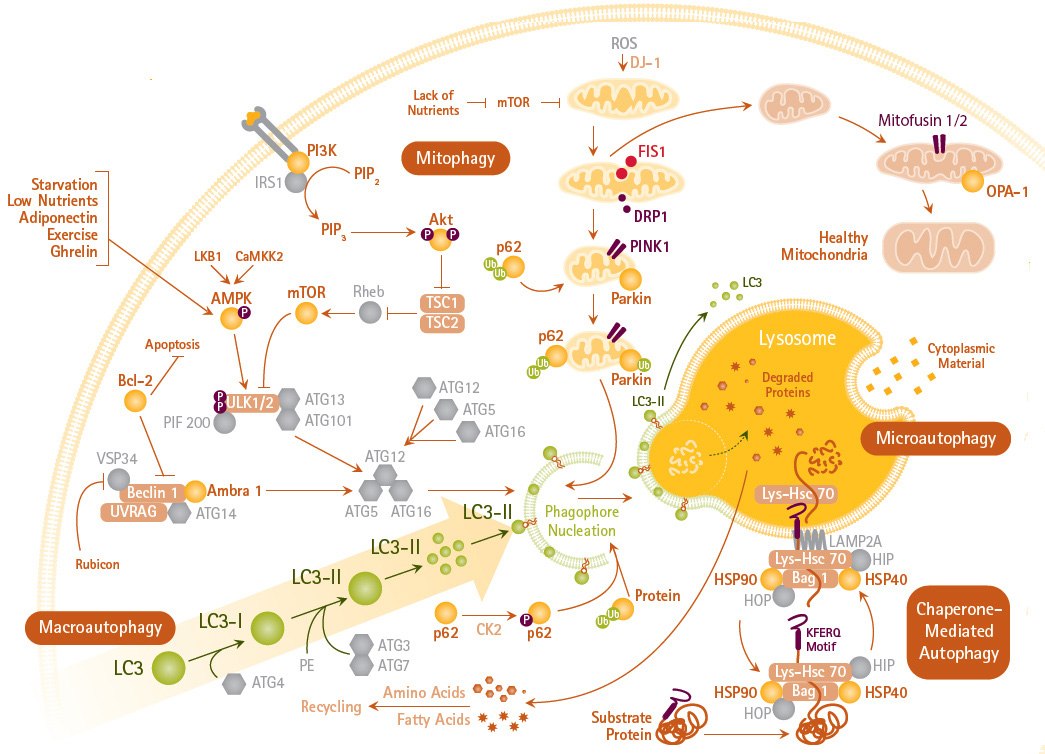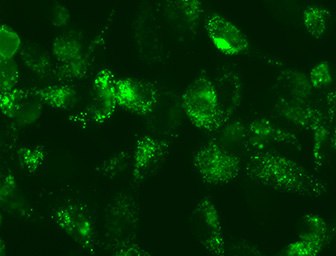Autophagy Assays
Autophagy is a highly regulated homeostatic degradative process where cells destroy their own components via the lysosomal machinery and recycle them. This process is associated with diverse diseases including Alzheimer’s disease1, aging2, cancer3 and Crohn’s disease. Via extensive crosstalk with pro-apoptotic signaling pathways, autophagy can also contribute to cell death and greatly influence general cell health. Malfunctions of autophagy can influence longevity and productivity of cells to function at full capacity. Elucidating the correlation between autophagy and apoptotic cell death has become the focus of a great deal of research, particularly in tumor biology. On one hand, autophagy may induce cell death by degrading essential components; conversely, it may facilitate survival of cancer cells under unfavorable metabolic conditions.

Figure 1.Autophagy Mechanisms and Signaling Pathways. Autophagy (including macroautophagy, mitophagy and microautophagy) is an intracellular degradation system that delivers cytoplasmic constituents to the lysosome often mediated by LC3.

Figure 2.Live Cell LC3 Lentiviral Fluorescent Biosensors.
Live Cell LC3 Lentiviral Fluorescent Biosensors
Members of the LC3 family play a key role in the maturation of the autophagosome, the central organelle of autophagy5. LC3 precursors, diffusely distributed in the cytosol, are proteolytically processed to form LC3-I. Upon initiation of autophagy, the C-terminal glycine is modified by addition of a phosphatidylethanolamine to form LC3-II, which translocates rapidly to nascent autophagosomes in a punctate distribution.
LentiBrite™ LC3 lentiviral particles provide bright GFP/RFP fluorescence and precise localization to enable live cell analysis of autophagy in difficult-to-transfect cell types. Analyze Live Cell Autophagy in cell cultures using pre-packaged high-titer fluorescent biosensors.
References
To continue reading please sign in or create an account.
Don't Have An Account?